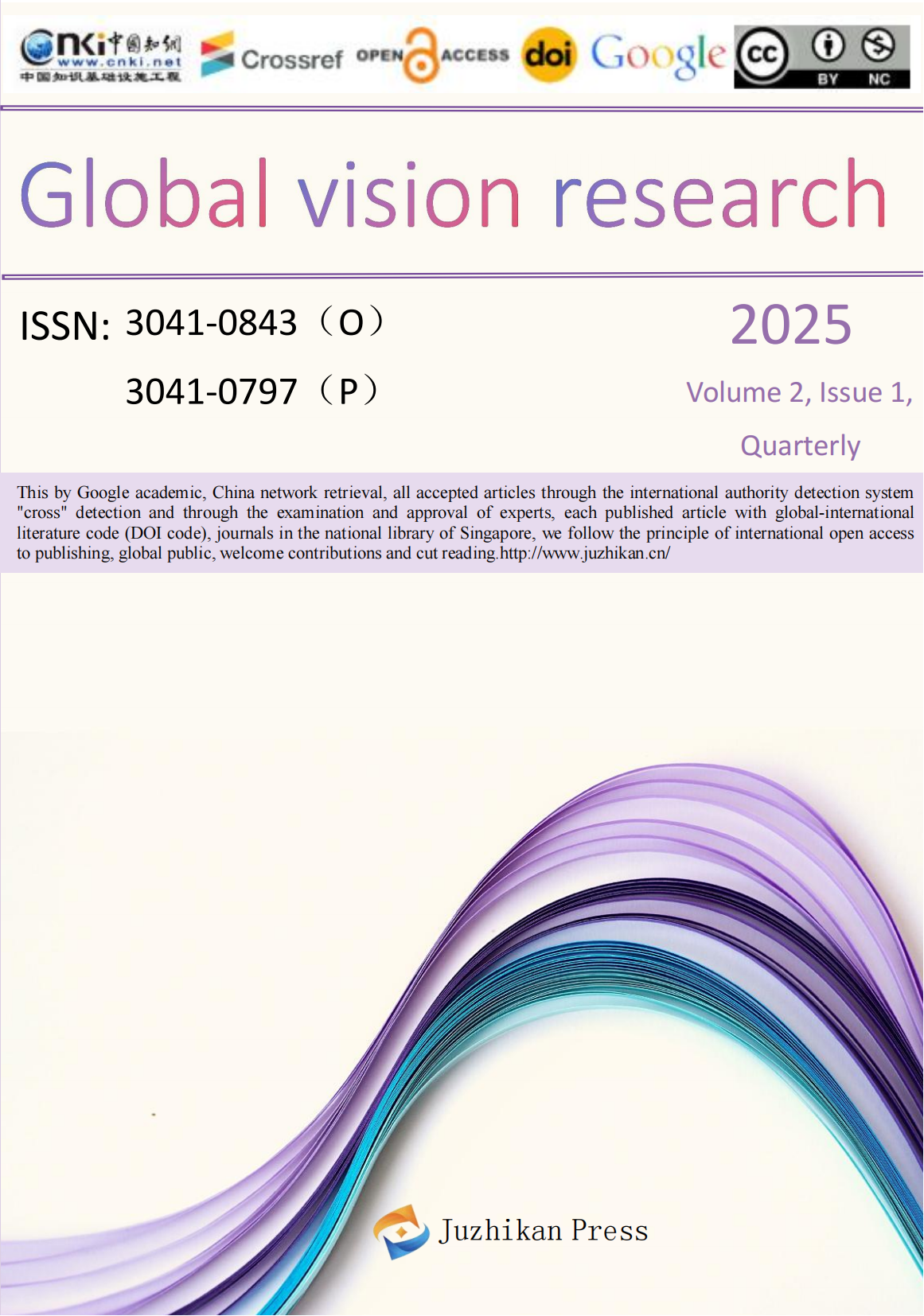
 info@juzhikan.asia
info@juzhikan.asia
 info@juzhikan.asia
info@juzhikan.asia
Evolving Relationship Between Tibetan Buddhists and the Environment: A Case Study of Kehe Township, Sichuan Province
Wendi Wu
Shanghai American School Pudong Campus,Shanghai,201201;
Abstract:This study examines the shifting relationship between Tibetan Buddhism and the environment in Kehe Township, Sichuan Province. Traditionally, Buddhist beliefs promoted ecological protection through reverence for sacred sites and moral principles. However, recent socio-economic changes—such as market expansion, secular education, and cultural dilution—have weakened these practices. Based on a qualitative case study, the research highlights both the environmental impacts and cultural erosion resulting from modernization, and proposes that integrating religious values into conservation efforts may enhance ecological and cultural resilience.
Keywords:Tibetan Buddhism; environment; Kehe Township; socio-economic change; sacred sites
References
[1] Abdi, O. A., Glover, E. K., & Luukkannen, O. (2013). Agroforestry, Desertification, Drought, Drylands, Natural Resources, Rainfall Trends, Sudan. 2013.
[2] Allen, T. H. (2009). Tibet: Landscape of Tradition and Change. Focus on Geography, 52(2), 23–29.
[3] Bai-ping, Z., Xiao-dong, C., Bao-Lin, L., & Yong-hui, Y. (2002). Biodiversity and conservation in the Tibetan Plateau. Journal of Geographical Sciences, 12, 135-143.
[4] Battaglia, M. (2008). Purposive sample. In Encyclopedia of survey research methods, 645–647.
[5] Bennett, M. T. (2008). China’s sloping land conversion program: Institutional innovation or business as usual? Ecological Economics, 65(4), 699–711.
[6] Dekhang (Ed.). (2000). Tibet 2000: Environment and development issues. Environment and Development Desk, DIIR, Central Tibetan Administration.
[7] Dudley, N. & World Wide Fund for Nature (Eds.). (2005). Beyond belief: Linking faiths and protected areas to support biodiversity conservation. WWF.
[8] Fang, H., Zhao, F., Lu, Y., Zhang, L., Zhang, Z., Sun, Y., & Jiang, Q. (2007). Remote sensing survey of ecological and geological and environmental factors in Qinghai-Tibetan plateau. Remote Sens. Land Resource, 4, 61-65.
[9] Gaerrang, K. (2017). Tibetan Buddhism, Wetland Transformation, and Environmentalism in Tibetan Pastoral Areas of Western China. Conservation and Society, 15(1), 14.
[10] Gould, J. E., Carttar, P. L., & Frazier, J. W. (2009). The New Tibet. 2009.
[11] Härkönen, M. (2007). The Changing Place of Religion and the Question of Secularization in the ‘Modernization’ of Tibet. 2007.
[12] Lanier, F. (2005). The Role of Tibetan Buddhism and Culture in Sustainable Development (A Case Study of Yubeng Village).
[13] Ldong Tsong Conservation. (2024). Brief Introduction to the Kehe Township. Unpublished manuscript.
[14] Liu, J., Xu, X., & Shao, Q. (2008). Grassland degradation in the “Three-River Headwaters” region, Qinghai Province. Journal of Geographical Sciences, 18(3), 259–273.
[15] Magaldi, D., & Berler, M. (2020). Semi-structured Interviews. Encyclopedia of Personality and Individual Differences, 4825–4830.
[16] Miller, D. J. (1990). Grasslands of the Tibetan Plateau. Rangelands, 12(3), 159-163.
[17] Palni, L. M. S., Dhar, R. B., Tandon, O. P., Academic Foundation (New Delhi, India), & Foundation for Non-Violent Alternatives (Eds.). (2019). The state of ecology of the Tibetan Plateau. Academic Foundation in association with The Foundation for Non-Violent Alternatives.
[18] Riger, S., & Sigurvinsdottir, R. (2016). Thematic Analysis. In L. Jason & D. Glenwick (Eds.), Handbook of methodological approaches to community - based research: Qualitative, quantitative, and mixed methods (pp. 33 - 41). Oxford University Press.
[19] Salick, J., Amend, A., Anderson, D., Hoffmeister, K., Gunn, B., & Zhendong, F. (2007). Tibetan sacred sites conserve old growth trees and cover in the eastern Himalayas. Biodiversity and Conservation, 16(3), 693–706.
[20] Sasaki, G. H. (1979). The Buddhist Concept of Sin and its Purification.
[21] Shen, X., Lu, Z., Li, S., & Chen, N. (2012). Tibetan Sacred Sites: Understanding the Traditional Management System and Its Role in Modern Conservation. Ecology and Society, 17(2), art13. https://doi.org/10.5751/ES-04785-170213
[22] Shrestha, U. B., & Bawa, K. S. (2013). Trade, harvest, and conservation of caterpillar fungus (Ophiocordyceps sinensis) in the Himalayas. Biological Conservation, 159, 514-520.
[23] Spoon, J. (2015). Everyday Buddhism and Environmental Decisions in the World’s Highest Ecosystem. Journal for the Study of Religion, Nature and Culture, 8(4), 429–459.
[24] Sulek, E. R. (2016). Caterpillar fungus and the economy of sinning. On entangled relations between religious and economic in a Tibetan pastoral region of Golog, Qinghai, China. Études Mongoles et Sibériennes, Centrasiatiques et Tibétaines, 47.
[25] Tucker, M. E., & Williams, D. R. (Eds.). (1997). Buddhism and ecology: The interconnection of dharma and deeds. Harvard University Center for the Study of World Religions : Distributed by Harvard University Press.
[26] Wen, L., Dong, S., Li, Y., Li, X., Shi, J., Wang, Y., Liu, D., & Ma, Y. (2013). Effect of Degradation Intensity on Grassland Ecosystem Services in the Alpine Region of Qinghai-Tibetan Plateau, China. PLoS ONE, 8(3), e58432.
[27] Winkler, D. (2008). Yartsa Gunbu (Cordyceps sinensis) and the Fungal Commodification of Tibet’s Rural Economy. Economic Botany, 62(3), 291–305.
[28] Woodhouse, E. (2012). The role of Tibetan Buddhism in environmental conservation under changing socio-economic conditions in China.
[29] Woodhouse, E., Mills, M. A., McGowan, P. J. K., & Milner-Gulland, E. J. (2015). Religious Relationships with the Environment in a Tibetan Rural Community: Interactions and Contrasts with Popular Notions of Indigenous Environmentalism. Human Ecology, 43(2), 295–307.
[30] Xiao, Y., Xiong, Q., Liang, P., & Xiao, Q. (2021). Potential risk to water resources under eco-restoration policy and global change in the Tibetan Plateau. Environmental Research Letters, 16(9), 094004.
[31] Yan, R., & Chen, R. (2024). Sustainable Development and Transformative Change in Tibet, China, from 1951 to 2021. Land, 13(7), 921.
[32] Yundannima, Y. (2017). Rangeland Use Rights Privatisation Based on the Tragedy of the Commons: A Case Study from Tibet. Conservation and Society, 15(3), 270.
[33] Zhang, X. (2023). A Discussion on the Reasons for the Change of Tibetan Buddhism Cultural Status in Modern Tibetan Areas. Journal of Humanities, Arts and Social Science, 7(4), 810–817.